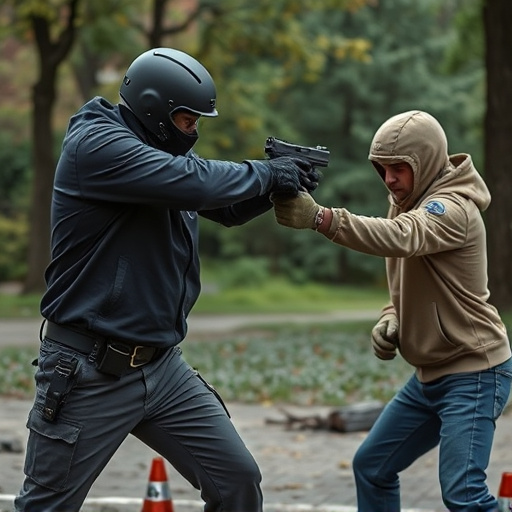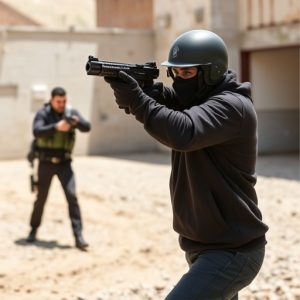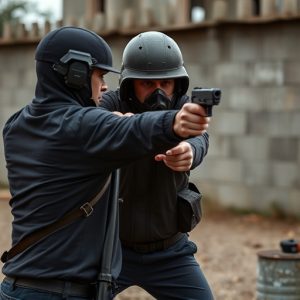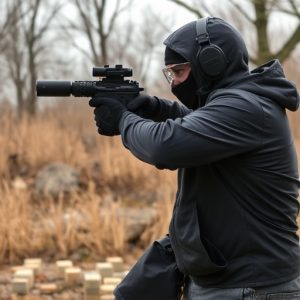Certifying Non-Lethal Weapons: Ensuring Safety Through Scientific Understanding
Non-lethal weapon training equips law enforcement with tools like Tasers and pepper spray to subdue…….
Non-lethal weapon training equips law enforcement with tools like Tasers and pepper spray to subdue individuals without permanent harm, reflecting a global shift towards accountable, non-violent policing. Trainees learn de-escalation techniques and crisis management to minimize force, understanding the legal implications and potential long-term effects of neurological stun injuries caused by these weapons. Certification processes assess proficiency while emphasizing safety standards and ongoing training ensures practitioners remain adept at handling complex situations while prioritizing well-being.
“In an era where public safety and officer well-being are paramount, non-lethal weapon training is gaining critical importance. This article delves into the transformative power of such certification programs, focusing on understanding their profound impact. We explore the science behind neurological stun effects, offering insights into how these weapons work. Furthermore, we navigate the certification processes, emphasizing their role in ensuring long-term safety for both officers and citizens. By examining ‘long-term neurological stun effects,’ this guide aims to equip readers with knowledge crucial for informed decision-making.”
- Understanding Non-Lethal Weapon Training and Its Impact
- The Science Behind Neurological Stun Effects
- Navigating Certification Processes for Long-Term Safety
Understanding Non-Lethal Weapon Training and Its Impact

Non-lethal weapon training, also known as less-lethal weapons certification, is a specialized program designed to equip law enforcement officers and security personnel with tools to subdue and control individuals without causing permanent harm or death. This type of training has gained significant importance in recent years due to the global push for more accountable and non-violent policing strategies. The focus on non-lethal methods acknowledges the profound impact of excessive force, especially considering the long-term neurological stun effects that can result from traditional lethal force.
By utilizing specialized equipment like Tasers, pepper spray, and rubber bullets, trainees learn to manage high-pressure situations effectively while minimizing the risk of severe injury or death. The certification process involves rigorous training in the proper use of these tools, their legal implications, and de-escalation techniques. Understanding the long-term neurological stun effects associated with non-lethal weapons is crucial; it ensures that officers can make informed decisions, using the necessary force while respecting the well-being of individuals they encounter.
The Science Behind Neurological Stun Effects

The science behind neurological stun effects reveals a complex interplay between electrical impulses and the brain. When a non-lethal weapon delivers an electric shock, it disrupts neural communication temporarily, leading to muscle paralysis and disorientation in the target. This disruption can result in long-term neurological stun effects, impacting cognitive functions, memory, and even sensory perception.
Research indicates that the impact isn’t merely physical but also psychological. Prolonged exposure to such shocks can cause chronic pain, anxiety, and post-traumatic stress disorder (PTSD). Understanding these long-term neurological stun effects is crucial for developing effective non-lethal weapons while ensuring user safety and minimizing unintended consequences.
Navigating Certification Processes for Long-Term Safety

Navigating the certification process for non-lethal weapon training is a crucial step in ensuring long-term safety. It involves rigorous standards and assessments to guarantee that individuals handling such weapons are properly equipped to do so responsibly and effectively. This process delves into various aspects, including physical dexterity, mental acuity, and an understanding of the weapon’s capabilities and limitations. By focusing on these skills, professionals can mitigate potential risks associated with long-term neurological stun effects, ensuring that every use of a non-lethal weapon is both safe and strategic.
Furthermore, certification programs often emphasize de-escalation techniques and crisis management, which are essential for minimizing the need for physical force and preventing prolonged exposure to stun effects. Regular recertification and ongoing training are vital components of maintaining safety standards, as they keep practitioners up-to-date with the latest research and tactics related to non-lethal weaponry. This commitment to continuous learning ensures that individuals remain adept at navigating complex situations while prioritizing the well-being of all involved parties.
Non-lethal weapon training, by understanding its impact and the science behind neurological stun effects, is a critical step towards ensuring public safety. Navigating certification processes rigorously ensures that those equipped with these tools possess the necessary skills and knowledge to manage situations effectively while mitigating long-term neurological stun effects. This comprehensive approach fosters a balanced use of force, promoting both security and the well-being of individuals involved.


